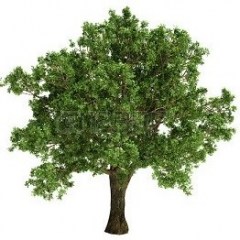Leaderboard
Popular Content
Showing content with the highest reputation on 27/06/19 in all areas
-
FULWOOD OLD CHAPEL In the 17th Century, after the passing of the Act of Uniformity, 1662, and the Five Mile Act, 1665, the Dissenters were compelled to resort to secret meetings, in secluded or out of the way places, in order to worship God as their consciences dictated. According to tradition, one such meeting place was on the Hallam moors, four miles from Fulwood. It was a farm a little way off the highway between Redmires and Stanage Pole. At this spot the Dissenters, from near and far, met at regular intervals for worship. Eventually a number of them decided to settle in Fulwood, and by the beginning of the eighteenth century there was a demand for a more convenient and centra1 place of meeting in Fulwood itself. In 1707 Fulwood Hall, a fine old farmhouse now the home of Mr. Morgan Fairest, became the property of John Fox of Sheffield Park, described as "gentleman". Under the Toleration Act, 1689, which repealed most of the very harsh laws against Dissenters, licences for dissenting meetinghouses could be obtained on application to the Quarter Sessions. In 1714 John Fox, of Fulwood Hall, was granted a licence for the use of his house as a place Of Worship. Fox was a benefactor to Hollis’s Hospital, Sheffield. He also realised the value of education; he was the donor of £150 for the provision of a school for the free education of 18 poor children from Fulwood and Hallam. An inscription on a cottage, formerly the schoolhouse in School Green lane, Fulwood, still recalls his generosity. 1730 Mr. John fox gave £50 Mr Jurie Clerk gave £10 Mr W Ronksley gave £30 Mr W Ronksley gave £30 Mary Ronksley gave £20. The school closed in 1875. It was William Ronksley, friend and neighbour of John Fox, and no doubt a fellow worshipper at Fulwood Hall, and earlier on Hallam moors, who left a permanent memorial down the lane below the old schoolhouse. William died in 1724. In his will he left £400 to build “ a large and spacious chapel” for the use of Dissenters. This quaint old chapel with its attractive stone mullioned diamond-paned windows and two doors, situated in a lovely countryside, in what became known as Old Chapel Lane, now Whiteley Lane, was opened for worship in 1728. A well-built meeting house (40 feet by 30 feet) standing back in what was once its own graveyard and is now a garden, the chapel psooesses a quiet dignity and simplicity. Its proportions are excellent. Externally its appearance has hardly changed at all from the time of its erection. The door and window mouldings, also the stone of the two-feet thick walls and heavy roof witness to the care of the builders. A parsonage was added at the east end in 1754 and at some later date a schoolroom at the west end of the chapel. This later addition robbed the chapel of some of its light, since it necessitated the blocking up of two windows. The old stocks now standing in the chapel gardens were moved there when the lane was widened in 1929. Originally they stood on Birks Green, close by, and they are said to be the only examples of their kind in the Sheffield district. The interior Of the Chapel has been altered several times. At one time a fine old, pulpit and sounding-board stood against the East wall and there were high-backed pews. Earlier still, the pulpit probably occupied the centre of the longer North wall between two small high windows which are splayed unequally to provide a maximum amount of light between them, and facing the entrance doors. The pulpit, sounding-board, and old pews have gone, having been attacked by decay and removed at the end of the last century. Their place was taken by a reading desk, standing in the middle of a platform running across the East end and by chairs for the congregation. Between the years 1951 - 1957, during the Ministry of the Rev. Fred Sokell, the Chapel was re-roofed, renovated, refurnished and electric heating was installed. Beautiful gifts of a pulpit, communion table, chairs, rail and steps, also a porch and doors all in solid Oak with blue velvet curtains and carpet, have created an interior for worship in keeping with the exterior of the beautiful yet simple and dignified old building. Today, known as Fulwood Old Chapel, the building was for a long time. known in the district as " Ronksley's Chapel”. William Ronksley, the founder of the Chapel, was the son of George and Ellen Ronksley, of Fulwood. He was born in the autumn of 1650 and baptized at Hathersage Parish Church on November 3rd, 1650. It may seem strange today that inhabitants of Fulwood should go over the moors to Hathersage for marriages and baptisms, but constant references to " Fulwood " in the parish register of Hathersage, show how separate Fulwood was from Sheffield in the 17th Century. William Ronksley was educated at the old Sheffield Grammar School (founded 1604) and in 1668 was admitted to Magdalene College, Cambridge. After Cambridge he settled down as a schoolmaster at Hathersage. He later became tutor to the sons of Francis Jessop, of Broom Hall. The full story of his life is exceptionally interesting, but cannot be told here; it reveals Ronksley's interest and concern for William Bagshaw, who was ejected from his living under the Act of Uniformity and who travelled tirelessly and preached extensively. He founded most of the early Nonconformist congregations, and rightly earned the name of "The Apostle of the Peak". Ronksley was keenly aware of the disabilities under which Dissenters in the Fulwood district had suffered earlier, and under which, in a sense, they still suffered, for lack of a proper house of meeting. So it was that, in his will, he provided for the building by which he is best remembered. Ronksley's will forms, in effect, the trust deed of the Chapel. It is clearly free from any doctrinal clauses. Its only stipulation is that the Chapel is for the use of "Dissenters from the Church of England ". In 1728, and not in 1729 which is carved on the Memorial Stone, the first Minister, Jeremiah Gill, of Sheffield was duly appointed by William Jessop, one of the trustees, and it was arranged that the interest of the endowment left by the founder should be paid to him half-yearly as long as he should remain minister. At last the Dissenters in Fulwood had a comfortable and convenient meeting place for warship. For 30 years the Rev. J. Gill was the minister until he died in September, 1758. Afterwards the Chapel was served by Ministers of Upper Chapel until 1798. Then followed several shorter ministries until the appointment of Hugh Garside Rhodes in 1827. Before he came, however, the capital sum of £400, the entire Fulwood endowment, was lost in Fenton's bankruptcy during the Napoleonic Wars; that was in 1808. In 1811 Hunter records "the interest was very low in Fulwood ". A part of the Congregation wished for an Orthodox minister, the trustees and others of the congregation were of a different opinion. This produced division and many unpleasant circumstances. However, by 1827 a fresh page in the history of Fulwood Old Chapel, and its longest ministry, opens with the appointment of Hugh Garside Rhodes. A sturdy Nonconformist of the old type, a man of strong faith arid deep convictions, Rhodes also played a public role in Sheffield 'which was long remembered. He took part in the " borough elections " joined in the agitation for the reform of parliamentary representation, and for the repeal of the corn laws, and was an advocate of popular education. His public spirit and energy were displayed during the 'cholera epidemic of 1832. He preached in the streets of Sheffield and was active in attending to the sick. One of his favourite places far preaching was the steps of the old Town Hall. In later years, he had influential friends like Samuel Plimsoll, M.P., of Whiteley Wood Hall, whose one-day-old daughter he buried in July, 1865, in the chapel yard. He was also instrumental in collecting sufficient money to build the little chapel near the Norfolk Arms Hotel., Ringinglow. After the death of Rhodes in 1873 only occasional services were held until 1878 when the Trustees rented the Chapel to the Wesleyans, at the nominal sum of one shilling per quarter, and continued to do so until the end of 1880. From that year until 1896 it was closed, and during that period it fell into decay. From 1899 to 1934 Congregationalists leased the Chapel from the Trustees. On the expiry of the lease in 1934, it was decided to re-open the Chapel as a Unitarian place of worship. Electric light was installed and the building repaired and redecorated. Sunday morning, the 6th of May, 1934, saw the little Chapel filled for the Re-opening Service, conducted by the Rev. H. J. McLachlan, M.A., B.D., Assistant Minister of Upper Chapel, Norfolk Street, Sheffield. The Rev. Alfred Hall, M.A., D.D., Minister of Upper Chapel, preached the Sermon from the Text in the fourth chapter of Joshua, " What mean ye by these stones ? " He referred to the interesting origin and history of the Chapel. A public meeting was held on the following day and a congregation formed under the charge of the Rev. H, J. McLachlan. Since that date, regular morning services have been held. In April, 1937, the Congregation sought and obtained official recognition as an affiliated Congregation to the General Assembly of Unitarian and Free Christian Churches. Ministers of Fulwood Old Chapel Jeremiah Gill ... ... ... ... 1728-1758 Ministers of Upper Chapel John Dickinson .. ... ... 1758-1780 Joseph Evans ... ... ... 1758- 1798 Benjamin Naylor ... ... . .. 1780-1798 Joseph Ramsblottom ... ... ... 179,8- 1802 William Whitelegge ... ... ... 1803-1810 Gilbert William Elliott ... ... ... 1811-1812 Students ... ... ... ... ... 1812-1817 John Macdonald ... ... ... 1817-1827 Hugh Garside Rhodes ... ... ... 1827-1873 Occasional Services ... ... ... 1873- 1878 Wesleyan Services .. . ... ... 1878- 1880 Closed ... ... ... ... ... 1880-1896 John Manning, M.A., and John Ellis ... 1896-1898 Congregational Services ... ... 1899-1934 Re-opened for Unitarian Services May 6th 1934 Herbert John McLachlan, M.A:, B.D. 1934-1937 David Thomas Evans ... ... ... 1937-1941 Philip Noble TindaIl, M.A., B.D, ... 1942- 1948 David Thomas Evans ... ... ... 1948-1951 Fred Sokell . ... . 19,51 - 19'60 Philip Baker Morris ... ... ... 1960-19631 point
-
This picture is of my father, Cyril Russell (later an arts and crafts teacher at Myers Grove), and his youngest sister, my aunt Alice Russell (later Linley), probably around 1946 when my father was on leave from the army. I have assumed it is at Forge Dam, though in those days municipal rowing lakes were a plenty. He'd have been about 25 at the time and had survived North Africa and the Italian landings. He went back to Italy and Yugoslavia and spent the next three years taking up mine fields in his role as a Royal Engineers Sapper.1 point


